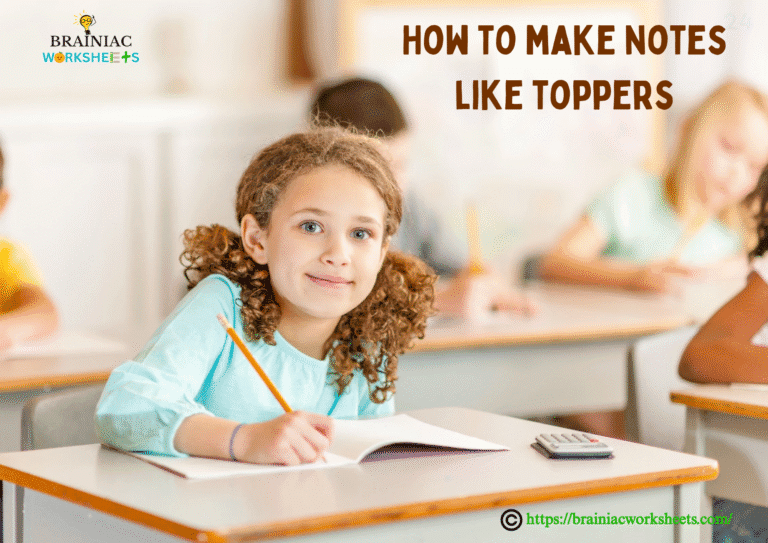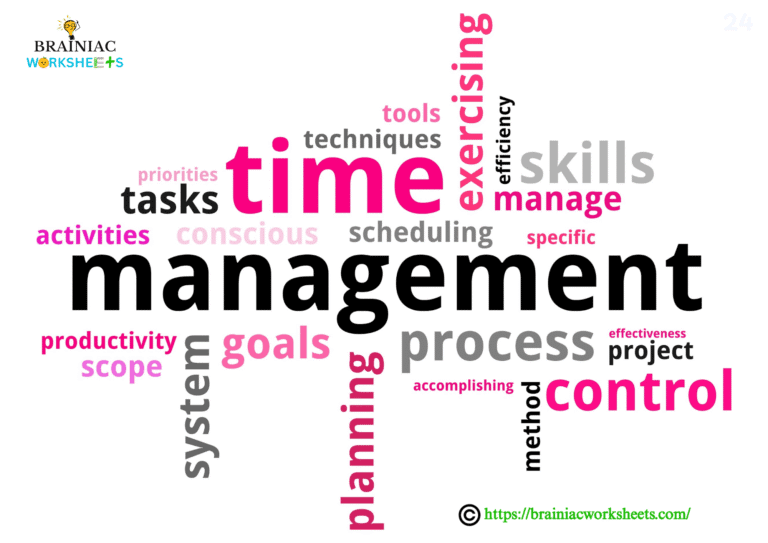Applying innovative teaching strategies and methods can make the classroom environment more engaging and active, which is the ultimate goal of every teacher. It often happens that you’re explaining a tricky concept, and yet, the hum of boredom and unattentiveness is almost audible. It’s not that children don’t want to learn; it’s that conventional methods usually neglect the child’s inherent curiosity. Recent studies on cognitive science tell us that active engagement is key—it’s not just about absorbing information, it’s about making connections and creating neural paths that stick. So, how do we bridge that gap? How do we convert a classroom from a place of inactive listening to a dynamic hub of discovery? This article will provide you with 10 actionable, innovative teaching strategies designed to do just that.
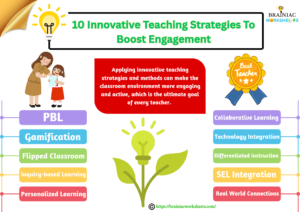
A. Personalized Learning Pathways:
i. Explain the core concept: modify learning to individual needs
The theory behind personalized learning ways is that every student learns in diverse styles. They possess unique strengths, deficits, learning manners, and paces. Rather than a one-strategy-fits-all approach, making personalized learning adjustments in the curriculum, delivery, and evaluation meet the individual requirements of every learner. This implies that some students might perform competently in visual methods, others in listening practices, and some through hands-on activities while others in intellectual aspects. It also means letting students to advance at their own speed, providing extra support where needed, and offering advanced challenges to those who are ready.
ii. Provide practical examples
Learning Contract: It’s a contract between the student and the teacher that traces exact learning goals, activities, and evaluation processes. Students take an active role in how they’ll learn and show what they’ve learned, which gives them a sense of ownership.
Choice Boards: These provide students with numerous choices for learning activities on a specific topic. Students can select the activities that will be most favorable to their learning style and interests. For e.g., a choice board on the water cycle will be most favorable to a diagram, writing a story, conducting an experiment, or presenting a research project.
iii. Explain how this increases engagement through student ownership
When student’s opinion is taken in their own learning, they are more enthusiastic and engaged in the learning process. Personalized learning paths give students the power to take charge of their education, which results in greater motivation and engagement. They feel cherished and admired, realizing that their personal needs are taken into account. This feeling of ownership creates greater attachment to the subject, rendering learning more fun and meaningful.
B. Cultivating a Growth Mindset:
i. Define the growth mindset and its impact on motivation
A growth mindset, according to Carol Dweck, is the perception that intelligence and potential can be escaled through positive effort, consistent learning, and continuous persistence. It contradicts a rigid mindset, which believes that intelligence is inflexible, and not subject to change. When students possess a growth mindset, they view obstacles as possibilities for improvement, not as threats to their ego. They learn from the mistakes they make. This belief ignites their motivation, with them they are more likely to accept challenges, push through failures, and pursue learning experiences.
ii. Suggest strategies for fostering it
Feedback: Give detailed, constructive feedback that targets the process of learning, not just the result. Rather than saying “You’re smart” you can say “I observed you experimented with a number of different methods to solve this problem and consistency really paid off.”
Celebrating Effort: Appreciate and celebrate effort, tenacity, and progress, but not necessarily inborn talent or accomplishment. Cultivate a learning environment where failure is used to learn and where setbacks are viewed as stepping stones.
iii. Explain how this leads to increased participation
When students believe that their efforts can lead to improvement, they are more likely to participate actively in class. They are less afraid of making mistakes or looking silly, as they see this as part of the learning process. A growth mindset inspires students to ask questions, take risks, and engage in conversations, leading to a more dynamic nature and interactive learning environment. Increased participation leads to more profound understanding and greater learning outcomes.
Top 10 Innovative Teaching Strategies With Examples
1. Project-Based Learning (PBL)
- Explanation: PBL engages students in working on long-term, real-world projects that solve challenging problems. It changes the paradigm from rote memorization to dynamic problem-solving, critical thinking, and cooperation.
- Engagement Boost: This strategy involves a variety of interesting tasks such as drawing, pasting pictures, researching, writing and so on. Students are extremely committed because they’re working on something meaningful and relevant to their lives. They conceive a sense of ownership and satisfaction in their work.
- Example: Rather than merely reading about ecosystems in a textbook, students create and construct a small, self-contained ecosystem in a terrarium. They study plant and animal relationships, monitor data, and report their results to the class. This activity combines science, mathematics, communication skills and team work.
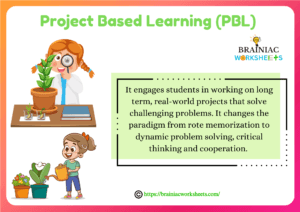
2. Gamification
- Explanation: Gamification incorporates game-design components like points, badges, leader boards, and challenges in learning activities. It instigates student’s natural desire for competition and achievement.
- Engagement Boost: It is fun and engaging, which makes it more motivating and participating. Students remain attentive and curious when they’re enjoying the activity.
- Example: To practice vocabulary, a teacher sets up a “word hunt” game where students earn points for correctly defining and using new words in sentences. They can unlock “hints” or rotate spin the wheel and compete on a class leader board. This makes practicing vocabulary a fun game.
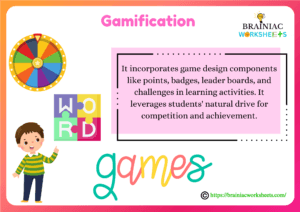
3. Flipped Classroom
- Explanation: In a flipped classroom, pre-recorded videos of formal lectures or assignments are given for students to review at home. Class time is then used for engaging in activities, discussions, and problem-solving.
- Engagement Boost: It allows for more dynamic learning and individual evaluation during class time. Students are more involved because they participate actively in the learning process, rather than passively listening to lectures.
- Example: In a history class, students watched a video lecture on the Indian independence movement at home the previous day. Class time is then used for debates, recreating historical events through drama and role-playing, and analyzing primary resources. This allows for deeper engagement and discussion in class.
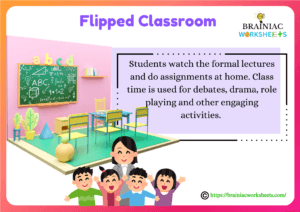
4. Inquiry-Based Learning
- Explanation: This strategy encourages students to ask questions, explore new topics, and come up with their own answers. It builds curiosity and analytical skills.
- Engagement Boost: Students remain more engaged when they’re actively and directly involved in discovering facts. It builds ownership and leads them to become responsible learners.
- Example: In a science lesson on buoyancy, the teacher asks a question: “How do we design a boat that will carry the maximum weight?” Students then create and test their own designed boat, experimenting and taking notes, developing the areas of failure to achieve success. This method encourages critical thinking and problem-solving.
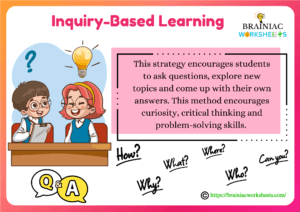
5. Personalized Learning
- Explanation: It adjusts the teaching pattern to satisfy the unique needs and learning styles of each student. This may include adaptive learning software, creating individualized assignments, resources, and learning strategies, lesson plans, and offering flexible learning options.
- Engagement Boost: Students are more active when they realize that their own unique needs are being addressed. It raises their level of value and ownership of their education.
- Example: Using adaptive learning software for maths, students work on situations modified to their skill level. The software adjusts the difficulty according to their progress, providing personalized feedback and assistance. Teachers can also make “choice boards” consisting of various activities, allowing students to select those that best suit their learning styles.
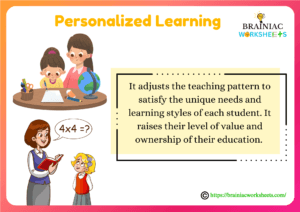
6. Collaborative Learning
- Explanation: Students solve problems by teamwork, complete projects, and learn from each other. It promotes teamwork, communication, and social skills.
- Engagement Boost: It encourages a sense of community and belonging, which has the potential to boost motivation and engagement. Students are more engaged when they acknowledge that they have the support of their friends.
- Example: Students collaborate in teams to make a multimedia presentation for a particular era in history. Each team member researches a different aspect (e.g., social, economic, political) and presents it as part of the final presentation. It encourages teamwork and communication skills.
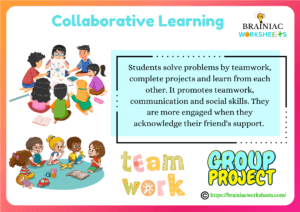
7. Technology Integration
- Explanation: Utilizing digital resources and tools to improve learning. This may involve interactive whiteboards or digital boards, online simulations, educational apps, educational websites, and virtual reality.
- Engagement Boost: Technology has the ability to make learning more interactive, engaging, and relevant to students’ digital lifestyle. It provides the key to a wealth of information and resources.
- Example: Utilizing virtual reality (VR) to explore ancient historical landmarks, or virtually dissecting a frog in a biology class. Interactive physics simulations or online teamwork tools for group projects also fall into this category.
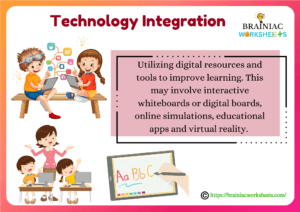
8. Differentiated Instruction
- Explanation: Shaping instruction and materials to address the varied needs of students in the classroom. It provides different support levels, challenges, and evaluations.
- Engagement Boost: It ensures that all students are properly attained and supported, which can enhance their motivation and engagement.
- Example: As part of a reading comprehension activity, the teacher presents miscellaneous versions of the text at different reading levels. They also offer various means through which students can show what they have understood, such as writing an essay, designing a visual presentation, reading a passage and answering questions based on it, or engaging in group discussions.
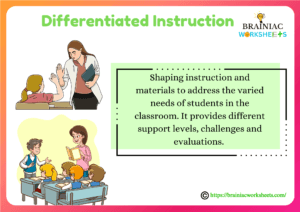
9. Social-Emotional Learning (SEL) Integration
- Explanation: Introducing activities and lessons that emphasizes on building social and emotional skills, such as self-awareness, self-management, social awareness, emotional intelligence, relationship skillfulness, and responsible decision-making qualities.
- Engagement Boost: When students feel emotionally supported and associated to their learning community, they are much more involved in the learning process. SEL helps to create a favorable and supportive classroom environment.
- Example: Starting each day with a “charge-up” circle where students share their emotions and set purposes for the day. Teachers can also integrate mindfulness activities, role-playing scenarios to practice conflict resolution, and group assignments that emphasize teamwork and empathy.
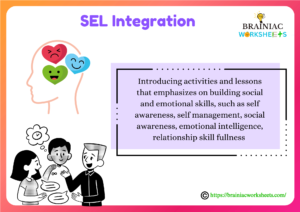
10. Real-World Connections
- Explanation: Associating classroom learning to real-world applications and experiences. This could be done through inviting guest speakers, excursions, and community-based activities.
- Engagement Boost: Students are more engaged when they understand the importance of what they are learning has practical relevance to their lives. It makes them see the reason why they are going to school and how they could use their acquired knowledge in everyday life.
- Example: Inviting a local architect to speak to students about the concepts of design and construction, or going on a field trip to a local company to observe how concepts of maths and science are used in the workplace. Students might also engage in a community service project, using their knowledge to solve a real-world problem.
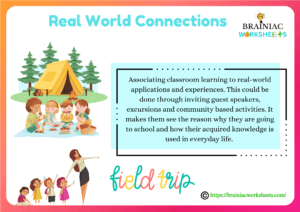
Technology Enhanced Engagement
1. Utilizing Interactive Whiteboards & Polling Tools
A. Show how these tools facilitate real-time interaction:
i. Interactive whiteboards evolve the standard whiteboard into an active, touch-sensitive screen. Teachers are able to control electronic content, scribble over slides, and even let students write directly on the screen. Voting tools, which are either a part of whiteboard software or are available as independent apps, enable teachers to ask questions and receive immediate responses from the entire class.
ii. This real-time engagement breaks down the old lecture model. Rather than simply listening, students are actively engaged by responding to polls, working on the whiteboard, or manipulating virtual objects. This feedback loop in real time generates a feeling of shared experience and engages students mentally.
B. Provide examples of software and applications:
i. Interactive Whiteboard Software: SMART Notebook, Promethean ActivInspire, and MimioStudio are popular options. These platforms allow teachers to create interactive lessons with multimedia elements, annotations, and interactive activities.
ii. Polling Tools: Kahoot!, Mentimeter, Poll Everywhere, and Google Forms are excellent for gathering instant feedback. These tools allow teachers to create quizzes, polls, and word clouds, giving real-time feedback on student performance.
C. Explain how instant feedback increases focus:
i. Instant feedback gives prompt reinforcement, whether it is a correct response or an error. When students find their responses posted on the screen in the moment, they will be more likely to listen and remain engaged.
ii. The instant feedback also initiates a sense of responsibility. Students are aware that their answers are open to the class, which makes them engage actively. The competitive or gamification aspect, which is commonly integrated into polling software, can also increase attention and motivation.
2. Creating Multimedia Content & Student-Generated Media
A. Discuss the power of visual and auditory learning:
i. Audio-visual learning is tailored to the varying learning styles and improves understanding. Visual aids, including pictures, videos, and infographics, can solidify and give shape to intangible ideas and make them easier to remember. Audio resources, such as podcasts and sound recordings, can be beneficial for students who learn through hearing.
ii. Multimedia content will also enhance engagement by offering variety and stimulation. By using a variety of media formats, teachers can respond to different learning styles and keep students engaged.
B. Suggest projects: podcasts, videos, digital portfolios:
i. Podcasts: Students may prepare podcasts to explain ideas, do interviews, or present research data. The project enhances communication, research, and editing of audio.
ii. Videos: Students can prepare videos to illustrate experiments, narrate stories, or show how complex processes work. The project enhances creativity, visual communication, and video editing skills.
iii. Digital Portfolios: Students may create digital portfolios to display their work, reflect on their education, and monitor their progress. This project enhances self-reflection, community, and digital literacy.
C. Explain how creativity increases engagement:
i. Creative projects enable students to articulate themselves and showcase their knowledge in exceptional ways. If they are given the independence to create, students are more engaged in the learning process.
ii. Creativity also develops problem-solving abilities and critical thinking. Students have to think out of the box to create innovative solutions and express them clearly. Active engagement results in more intense learning and better retention.
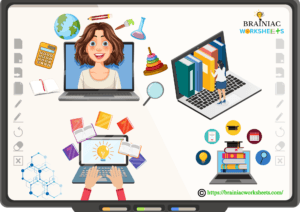
Future Of Innovative Teaching Strategies
The future of innovative teaching strategies is extremely dynamic, driven by swift technological changes and changing educational ideologies. Let’s take a quick look:
1. Hyper-Personalization Using AI:
Artificial Intelligence will play a huge part in providing extensively personalized learning experiences. AI-based platforms will examine student information to identify distinctive learning patterns, strengths, and weaknesses, and adjust curriculum and instruction dynamically.
This will enable adaptive learning, responding in real-time to the advancement of students, with focused support and challenge.
2. Immersive Learning with AR/VR:
Virtual Reality (VR) and Augmented Reality (AR) will revolutionize the manner in which students learn. Picture learning about ancient civilizations, cutting open a virtual heart, or executing complex scientific protocols in a safe, enclosing setting.
These two technologies will make abstract ideas more tangible and interactive, leading to deeper learning and greater retention.
3. Blended and Hybrid Learning Models Becoming the Norm:
The pandemic accelerated the implementation of online and combined learning. In the future, these types of models will be even more progressive, incorporating the best of face-to-face and online education.
Flexible learning pathways will allow students to learn at their own pace and tap into resources from anywhere in the world.
4. Increased Emphasis on Social-Emotional Learning (SEL):
Considering the value of holistic development, schools will further focus on SEL.
Innovative teaching strategies will integrate mindfulness, empathy exercises, and co-learning projects that develop social and emotional competencies.
5. Gamification and Game-Based Learning Refined:
Gamification will evolve to be more advanced, comprising elements of artificial intelligence and adaptive learning.
Educational games will be developed to deliver personalized challenges and feedback, which will make learning more interactive and compelling.
6. Data-Driven Instruction and Assessment:
Teachers will have access to strong data analytics technology that gives prompt feedback on the progress of the students.
Instructors will be using this information to make better teaching decisions that can be directly used to meet students’ specific needs.
This will divert instruction from standardized test assessment to a more realistic and performance-based test assessment that accurately reflects real-life skills.
7. Collaborative and Networked Learning:
Learning will become more collaborative, with students working together on projects and sharing knowledge through online platforms.
Teachers will connect with other educators around the world, sharing best practices and resources.
8. Focus on Creativity and Innovation:
Education will shift its focus from rote memorization to creativity, critical thinking, and problem-solving.
Innovative teaching strategies will encourage students to think outside the box and develop their own solutions to real-world problems.
9. Lifelong Learning and Micro-Credentials:
Learning will become a lifelong pursuit, with individuals constantly acquiring new skills and knowledge.
Micro-credentials and digital badges will provide flexible and accessible ways to demonstrate competence in specific skills.
10. Ethical Considerations and Digital Literacy:
With technology increasingly becoming part of the curriculum, there will be an increasing focus on digital literacy and ethics.
The future of innovative teaching is about creating personalized, engaging, and useful learning experiences that prepare students for future challenges and opportunities.
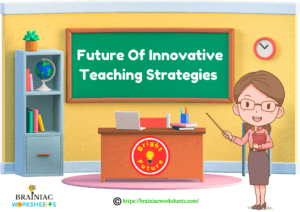
Conclusion: Implementation & Long-Term Impact
We’ve explored 10 powerful and innovative teaching strategies that are designed to bloom the bud of engagement and curiosity in students. From the immersive world of Project-Based Learning, where students become active problem-solvers, to the personalized journeys offered by personalized learning paths, and the pure enjoyment of gamification, these methods offer concrete advantages. They promote in-depth understanding, nourish curiosity, enhance retention, and develop futuristic skills like critical thinking, teamwork, and creativity.
Start with implementing one or two strategies that resonate with your students. You can begin by incorporating short quizzes into your lessons or experimenting with a flipped classroom approach for a single unit. You can also organize a debate session with specific time limits. Remember, every small step towards innovation is a step towards a more engaging and effective learning environment that contributes to the development of innovative and new teaching methods.
When students are actively involved in their learning, they develop a genuine love for knowledge and as a result show excellence in academics and co-curriculum activities. They become self-directed learners, critical thinkers, and effective communicators—skills that are essential for success in both academic and professional life. Moreover, engaged students contribute to a more positive and dynamic classroom culture, where everyone is involved.
So, I encourage you to do experiments with innovative teaching strategies. Don’t hesitate to try new things, to adapt and refine your approach. Take the challenge of innovation, and witness the transformative power that produces engaged students. Your effort, and hard work, your students, and their future deserve this.
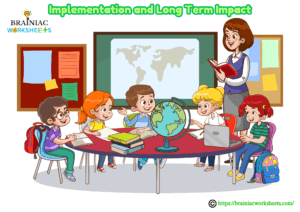
Frequently Asked Questions (FAQs)
Q: What are some innovative ways to foster creativity and critical thinking in students?
A: To cultivate creativity and critical thinking, educators can employ project-based and inquiry-based learning, design thinking, and gamification, all promoting problem-solving and diverse perspectives. Incorporating arts-based activities and reflection further enhances these skills, fostering a dynamic and analytical learning environment.
Q: How can I adapt innovative teaching strategies for diverse learners and students with special needs?
A: To adapt innovative teaching strategies for diverse learners and special needs, prioritize flexibility through differentiated instruction, assistive technology, and varied learning materials. Personalized plans, inclusive environments, and collaboration with specialists are essential for equitable access and success.
Q: How do I assess the effectiveness of innovative teaching strategies in my classroom?
A: To assess the effectiveness of innovative teaching strategies, use varied methods: observe engagement, analyze projects and portfolios, collect student feedback, and track learning data. Compare results, utilize tech for real-time insights, and document growth via portfolios, ensuring a comprehensive evaluation.
Q: What are some practical tips for teachers looking to transition to more innovative teaching methods?
A: Transition to innovative teaching methods by starting small, focusing on one strategy at a time, and prioritizing professional development. Collaborate with colleagues and parents, take suggestions from seniors or ex-teachers, gather student feedback, and use digital tools. Embrace experimentation and create a collaborative, adaptable classroom that encourages student participation.
Q: How can I overcome challenges when implementing innovative teaching strategies?
A: To overcome challenges in implementing innovative teaching strategies, proactively address specific obstacles, break changes into smaller steps, and maintain open communication with students. Seek support from online communities, document experiences, and adopt a growth mindset. Patience and adaptability are key to successful implementation.
Q: How can I encourage student feedback and participation in the development of innovative teaching strategies?
A: Encourage student feedback by establishing open communication, valuing their input, and creating a culture where they feel heard. Implement student-led discussions to co-create and pilot new strategies, and demonstrate that feedback is acted upon. Celebrate collaborative successes to foster ownership in shaping their education.
Q: What are the best digital tools for innovative teaching?
A: Effective digital tools for innovative teaching include interactive platforms like Kahoot! and Nearpod, collaboration tools like Google Workspace and Microsoft Teams, multimedia creation tools like Canva and Adobe Creative Cloud, resourceful learning platforms like Brainiac Worksheets (FREE Worksheets and Workbooks download), Khan Academy, and immersive AR/VR applications. Learning management systems like Google Classroom streamline organization and communication, making these tools essential for modern classrooms.
Q: How can I use storytelling and narrative techniques as innovative teaching strategies?
A: Storytelling enhances teaching by framing lessons as engaging narratives with character and plot, making abstract concepts relatable. Digital tools enable students to create their own stories, enhancing creativity. Utilizing narratives into discussions and presentations deepens engagement which makes learning more impactful.
I hope this article was helpful.
Dear readers, contact us if you have any queries or comment below.
Thank you,
Simran Mondal.


